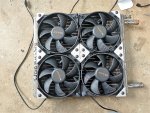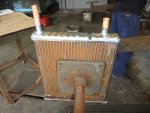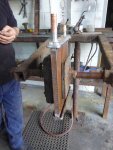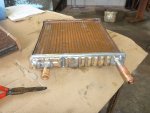I will add my input to this discussion.
Our campervan is all electric, with exception of the Webasto header and V10 engine, which both run off the fuel tank.
The specs are 400 W of solar feeding 200 kWh of lithium batteries, along with the alternator charging when we drive. With this set up we cook with an InstaPot, microwave and induction cooktop. We also have adequate hot water from the 2.5 gal water heater. The heater is a 110V heater from Home Depot with the heating element replaced with a 12V, 300 W heating element. The system is designed to divert the excessive solar power (after the batteries are charged) to the hot water heater. The hot water system cost about $250. The solar/battery system cost substantially more.
Here is a link to the build thread. The hot water system starts on post #133.
https://www.sportsmobileforum.com/forums/f24/2012-e-350-eb-v10-4x4-ccv-top-20698-14.html
We have over 150 nights in the van and we have never ran out of hot water. We have adequate hot water to wash up and clean the dishes each day and both take a shower at night, if we want to. If we get some sun during the day, the battery is topped off and the water is heated. Now, if the day was overcast or we camped in total shade, the battery power would only last a day or two, depending how we conserved power while cooking. Usually we drive most days, so we have never lacked in battery power or hot water.
>> Corey
Awesome info you share on the Home Depot heater. I almost went that route, but after going back and forth of cost and time spent I decided to go with the Isotemp Basic. I gave up on Elgena as I tried contacting them and they took several days to reply, they also have lower pressure ratings. The Isotemp despite not being 24V can handle higher pressure so I assumed it was better built, an advantage of the Isotemp vs Kuuma is it eliminates the need to change an Anode. Yes I could carry an Anode, but rather pay a bit more and not worry about the anode.
The Isotemp is 750Watts at 110 so Inverter will have to be on to heat up water. I'm building a controller to turn on/off loads and I will have an algorithm that will auto turn on the inveter and water heater once batteries are at 90% or if the user requests.






